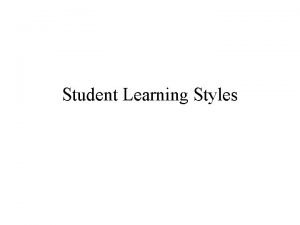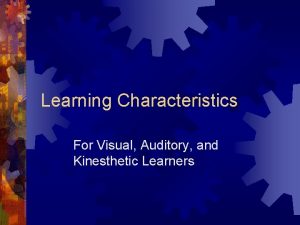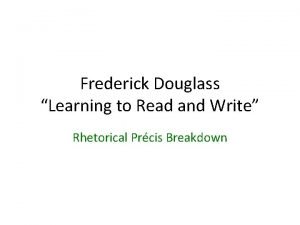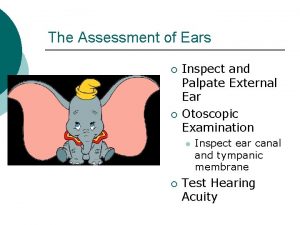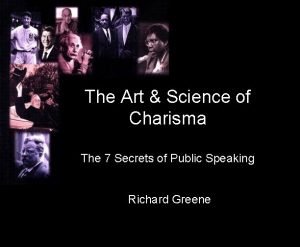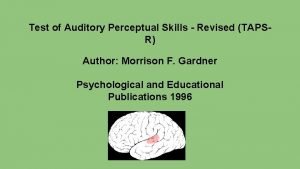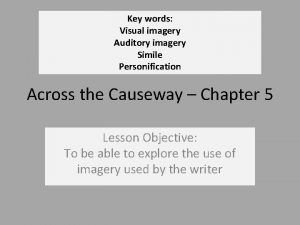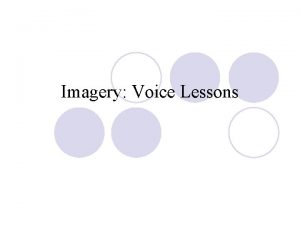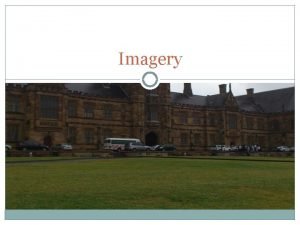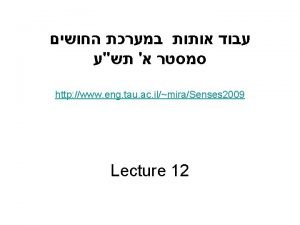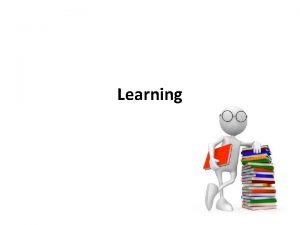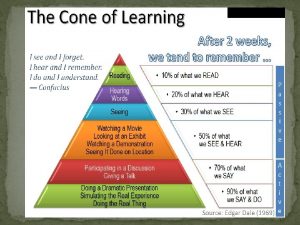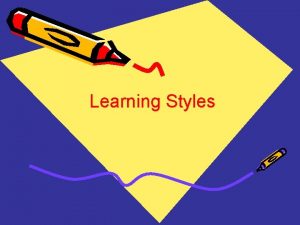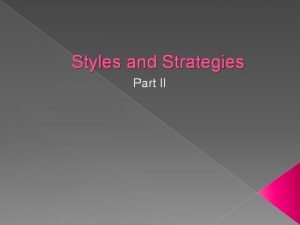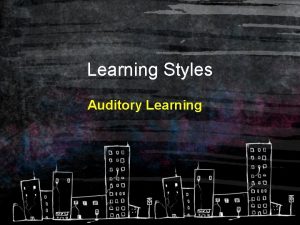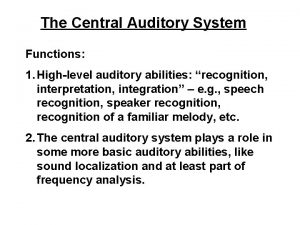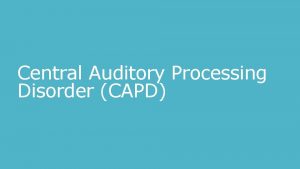Learning Styles Visual Learning Styles Auditory Read Write













- Slides: 13

Learning Styles

• Visual Learning Styles • Auditory • Read / Write • Kinaesthetic

Visual Study Strategies

Visual Study Strategies

Visual Study Strategies

Auditory Study Strategies • • • • • • INTAKE To take in the information: attend classes attend discussions and tutorials discuss topics with others discuss topics with your teachers explain new ideas to other people use a tape recorder remember the interesting examples, stories, jokes. . . describe the overheads, pictures and other visuals to somebody who was not there leave spaces in your notes for later recall and 'filling' SWOT - Study without tears To make a learnable Convert your "notes" into a learnable package by reducing them (3: 1) Your notes may be poor because you prefer to listen. You will need to expand your notes by talking with others and collecting notes from the textbook. Put your summarised notes onto tapes and listen to them. Ask others to 'hear' your understanding of a topic. Read your summarised notes aloud. Explain your notes to another 'aural' person. OUTPUT To perform well in any test, assignment or examination: Imagine talking with the examiner. Listen to your voices and write them down. Spend time in quiet places recalling the ideas. Practice writing answers to old exam questions. Speak your answers aloud or inside your head. • You prefer to have this page explained to you. The written words are not as valuable as those you hear. You will probably go and tell somebody about this

Read/Write Study Strategies If you have a strong preference for learning by Reading and Writing learning you should use some or all of the following: • • • INTAKE ( To take in the information ) lists headings dictionaries glossaries definitions handouts textbooks readings - library notes (often verbatim) teachers who use words well and have lots of information in sentences and notes essays manuals (computing and laboratory)

Read/Write Study Strategies SWOT - Study without tears To make a learnable package: • Convert your "notes" into a learnable package by reducing them (3: 1) • Write out the words again and again. • Read your notes (silently) again and again. • Rewrite the ideas and principles into other words. • Organize any diagrams, graphs. . . into statements, e. g. "The trend is. . . " • Turn reactions, diagrams, charts and flows into words. • Imagine your lists arranged in multiplechoice questions and distinguish each from each.

Read/Write Study Strategies • OUTPUT To perform well in any test, assignment or examination: Write exam answers. Practice with multiple choice questions. Write paragraphs, beginnings and endings. Write your lists (a, b, c, d, 1, 2, 3, 4). Arrange your words into hierarchies and points. • • • You like this page because the emphasis is on words and lists. You believe the meanings are within the words, so any talk is OK but a handout is better. You are heading for the library.

Kinaesthetic Study Strategies • • • INTAKE all your senses - sight, touch, taste, smell, hearing. . laboratories field trips field tours examples of principles lecturers who give real-life examples applications hands-on approaches (computing) trial and error collections of rock types, plants, shells, grasses. . . exhibits, samples, photographs. . . recipes - solutions to problems, previous exam papers

Kinaesthetic Study Strategies SWOT • Convert your lecture “notes” into a learnable • • package by reducing them (3: 1). Your lecture notes may be poor because the topics were not 'concrete' or 'relevant'. You will remember the "real" things that happened. Put plenty of examples into your summary. Use case studies and applications to help with principles and abstract concepts. Talk about your notes with another "K" person. Use pictures and photographs that illustrate an idea. Go back to the laboratory or your lab manual. Recall the experiments, field trip. . .

Kinaesthetic Study Strategies OUTPUT • Write practice answers, paragraphs. . . • Role play the exam situation in your own room.

• Let me explore my easiest concepts in a different style. • Just don't teach me all the time in your preferred style and think I'm not capable of learning. “ • Teach me my most difficult concepts in my preferred style. A story and a comment from Virleen M. Carlson , Center for Learning and Teaching, Cornell University, USA.
 What is auditory learning
What is auditory learning Auditory learners characteristics
Auditory learners characteristics The seven learning styles
The seven learning styles Learning to read and write frederick douglass analysis
Learning to read and write frederick douglass analysis Rinne test method
Rinne test method Richard greene public speaker
Richard greene public speaker Test of auditory perceptual skills
Test of auditory perceptual skills Sexual tactile hallucinations
Sexual tactile hallucinations Auditory imagery words
Auditory imagery words Voice lessons diction answer key
Voice lessons diction answer key Olfactory imagery example
Olfactory imagery example Imagery poem examples
Imagery poem examples Ecolima ear
Ecolima ear Auditory sensory
Auditory sensory
